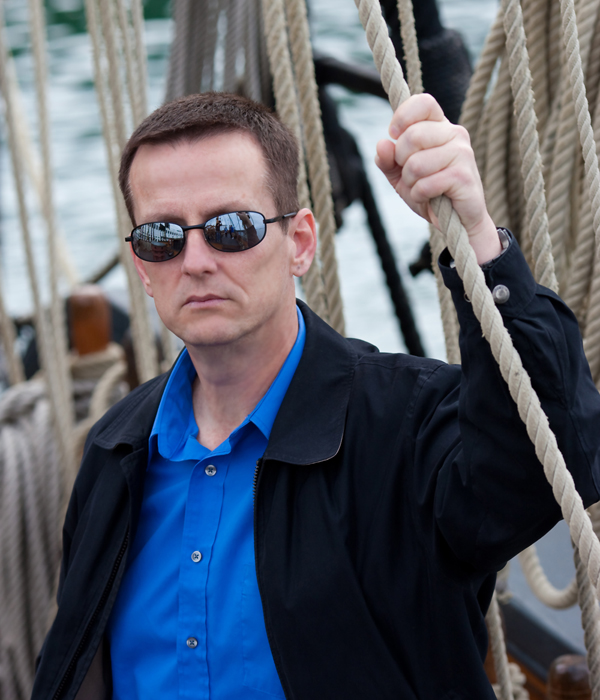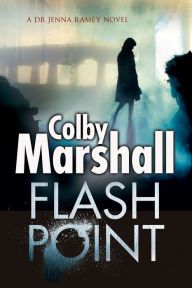Evening of Explosions and Intrigue: Jeff Edwards Blows Stuff Up For Fun
By - August 23, 2013
We've made it all the way to 10 p.m., which is a beautiful thing since now, thriller author Jeff Edwards is here with a killer topic. But first, a reminder to check out the bottom of this post for details on how to win Jeff's giveaway as well as a giveaway from Booklist Top Ten Youth Fantasy Novelist Cindy Pon. And of course, the reminder:

Now, I'll hand the blog over to Jeff for his guest post entitled:
"Blowing Stuff Up For Fun and Profit"
by Jeff Edwards
NavyThriller.com
 What makes an explosion work? I don’t mean the chemistry of accelerated chemical oxidation, or the physics of overpressure and wave front expansion. I’m talking about fiction. It’s nearly impossible to watch an action movie or read a thriller novel without encountering lots of stuff that goes boom. So what is it that makes some fictional explosions work brilliantly, while others are complete duds? (Oh, come on… You had to see that coming…)
What makes an explosion work? I don’t mean the chemistry of accelerated chemical oxidation, or the physics of overpressure and wave front expansion. I’m talking about fiction. It’s nearly impossible to watch an action movie or read a thriller novel without encountering lots of stuff that goes boom. So what is it that makes some fictional explosions work brilliantly, while others are complete duds? (Oh, come on… You had to see that coming…)
Okay, bad puns aside, my question is serious. Why do some explosions succeed as story devices, while others fail?
As a writer of military thrillers, the mechanics of mayhem are very much my stock-in-trade. I’ve spent a lot of time examining the use of explosions in books and movies. Along the way I’ve formulated a few theories on the subject, some of which I have since discarded, as you will see.
Theory #1: It’s all about accuracy. If you get your physics wrong, the lack of authenticity will shatter the audience’s suspension of disbelief.
This is a tempting notion. It sounds true, or at least like it should be true. Unfortunately, it isn’t. For my money, the ruptured air tank at the end of Jaws is one of the most successful explosions in film history. Does it accurately reflect what happens when a rifle bullet penetrates a scuba tank? Not at all. Does it work as a piece of storytelling? In my opinion, it does. I could toss out a few more examples, but this one gets the point across. Accuracy is not everything.
Theory #2: Less is more. Too many explosions will actually reduce the level of excitement.
This one also sounds true, and I accepted it as a solid rule of thumb until I watched the Omaha Beach landing in the opening scenes of Saving Private Ryan. Explosions are cooking off like popcorn kernels in the microwave, and it’s positively terrifying. Instead of becoming jaded, my brain kicks into sensory overload, and my adrenaline ramps up so far that I nearly get nauseous. I’ve read several interviews with D-Day  veterans who claim that the on-screen version of the invasion is damned near as frightening as the real thing. Bottom line… While it is possible to overuse explosions—as Hollywood has proven many times—sometimes, more is better.
veterans who claim that the on-screen version of the invasion is damned near as frightening as the real thing. Bottom line… While it is possible to overuse explosions—as Hollywood has proven many times—sometimes, more is better.
Theory #3: Emotional connection is critical. If the audience can’t establish an emotional bond, then all you have is a bunch of flashy pyrotechnics.
To some authors and screenwriters, this one may seem counterintuitive. Explosions are about fire, and smoke, and destruction. So why am I talking about touchy-feely crap? The short answer is that I’m not. When I say emotional connection, I don’t mean romantic longing or soulful glances across a candlelit table. I mean helping the reader or viewer to care about someone (or something) that happens to find itself within the danger radius of the explosion.
Movies frequently try to simulate this process by having the main character—whom we presumably care about—close enough to the blast to get his/her clothing singed, but far enough away to escape serious bodily injury. This is probably best typified by the many (many) shots of Bruce Willis being blown off his feet and hurtled through the air while a large and lurid CGI fireball blossoms on the green-screen at his back. Does it work? As eye-candy, maybe. As storytelling, not so much. At no point do I actually feel like Bruce Willis is going to get his toes blown off. All that smoke and fire is just scenery.
So how do we establish the emotional connection that I’ve been rambling about? I’ve found two ways. There are almost certainly other alternatives, and I’m constantly on the lookout for them. But in the meantime, these two seem to work pretty well.
First, you can use the explosion to actually kill off one or more viewpoint characters. To be truly effective, this technique requires you to spend
a little time letting your audience get to know the victims. This sounds long and labor-intensive, but it doesn’t have to be.
 In Sea of Shadows, I introduced Lieutenant Ray Forester, Ensign Ted Dillon, and their Sensor Operator at the beginning of Chapter 21. Exactly 1,509 words later, they were all blown out of the sky, along with their helicopter, Wolfhound Eight-Seven. In the years since the book was published, I’ve received floods of comments from readers who were saddened or angered by the destruction of Wolfhound Eight-Seven and its crew.
In Sea of Shadows, I introduced Lieutenant Ray Forester, Ensign Ted Dillon, and their Sensor Operator at the beginning of Chapter 21. Exactly 1,509 words later, they were all blown out of the sky, along with their helicopter, Wolfhound Eight-Seven. In the years since the book was published, I’ve received floods of comments from readers who were saddened or angered by the destruction of Wolfhound Eight-Seven and its crew.
We go from introduction to fiery death in just a little over three pages, but it’s enough time for readers to feel the connection and begin to care. When that missile warhead explodes, it isn’t just a flashy bit of scenery. It matters. And it hits you like a punch in the stomach.
I’m not claiming that I’ve mastered this technique. Far from it. I can name a hundred authors who do this better than I do. I’m merely pointing out that even an abbreviated sense of human connection makes an enormous difference. And if I can do this, anyone can.
The second method is a bit more unusual, and it’s harder to pull off. It involves treating the explosive device itself as a character in the story. Even the most primitive bomb is a machine of sorts. It may have moving parts, or electronic circuitry, or attached sensors, or all manner of interesting hardware and software. Any of these things can be described in such a way that the device and its internal processes come to life for the reader. Again, this is tricky. But if you do it properly, the effect can be compelling.
Here are four paragraphs from The Seventh Angel, where I attempted to put this method into action…
--------------------
Tortured beyond the boundaries of elemental stability, the plutonium shifted from its natural process of gradual radioactive decay, to an accelerated state of induced fission. The nuclei of many of the plutonium atoms were crushed or split by the extraordinary mechanical force of the compression wave. The shattered nuclei emitted heat, photons, X radiation, gamma rays, and neutrons. The neutrons were flung out to strike adjacent atoms like randomly fired bullets, shattering previously undamaged plutonium atoms and releasing larger quantities of heat, light, radiation, and still more neutrons.
Through a process known as 'doubling', the chain reaction escalated. Fifty damaged atoms became a hundred. Then one hundred became two hundred, and two hundred became four hundred. In the space of a few nanoseconds, the chain reaction grew a million times more powerful than the implosion that had triggered it.
Heat, radiation, and mechanical force erupted outward in a thunderous explosion of atomic energy. But it didn’t stop there. The mechanical force and radiation of the primary stage attacked the secondary core of depleted uranium at the heart of the bomb. Tritium atoms merged with uranium atoms, and the expanding fission reaction was magnified by nuclear fusion.
The fireball and shock wave grew, and everything they touched was obliterated. Every living creature within their hideous circle of effect was instantly incinerated. And the telltale mushroom cloud, not seen in battle since the annihilation of Nagasaki, climbed toward the blue California sky.
-----------------------
Again, I’m not claiming perfection in this technique, but this excerpt does illustrate what I’m talking about. When the bomb (or missile, or  torpedo, or grenade) becomes the center of attention, then the steps leading up to detonation can become a compelling action sequence all by themselves.
torpedo, or grenade) becomes the center of attention, then the steps leading up to detonation can become a compelling action sequence all by themselves.
And that brings us back to the question I asked at the beginning. What makes an explosion work? It’s not technical accuracy. It’s not the frequency or intensity of the blasts. As far as this author is concerned, the answer is emotional connection. It can be connection to the characters who are within the blast radius, or even a connection to the explosive device and its associated processes. The object of the connection doesn’t seem to be the critical factor. What’s important is that the audience has to feel the significance of the blast. In other words, it has to matter.
Otherwise, it’s all just bright light and loud noises.
***Jeff is giving away an autographed copy of Sea of Shadows to two lucky commenters on this post. So, don't forget to comment!***
ABOUT JEFF: Jeff Edwards is a retired U.S. Navy Chief Petty Officer, and an Anti-Submarine Warfare Specialist. His naval career spanned more than two decades and half the globe, from chasing Soviet nuclear attack submarines during the Cold War, to launching cruise missiles in the Persian Gulf.
Trained extensively in mainframe computers, weapons systems, and naval combat tactics, he brings an experience-based edge of authenticity to his writing. Collectively, his novels have won the Admiral Nimitz Award for Outstanding Naval Fiction, the Reader’s Choice Award, the Clive Cussler Grandmaster Award for Adventure Writing, the Military Writer’s Society of America Gold Medal for Navy Fiction, the Independent Publishers of America Silver Medal for Military Fiction, and the American Author Medal.
He lives in California, where he consults for the Department of the Navy.
Jeff’s son, Joshua, died in 2002 from Osteosarcoma, at the age of 17. Jeff’s first novel was dedicated to Josh’s memory.
With An Additional Giveaway From
CINDY PON
***Another lucky commenter will win an autographed set of hardback copies of Cindy Pon's Silver Phoenix and Fury of the Phoenix.***
ABOUT THE BOOKS:
Books:
SILVER PHOENIX:
On the day of her first betrothal meeting--and rejection--Ai Ling discovers a power welling deep within her. She can reach into other people’s spirits, hear their thoughts, see their dreams…and that’s just the beginning.
Ai Ling has been marked by the immortals; her destiny lies in the emperor’s palace, where a terrible evil has lived, stealing souls, for centuries. She must conquer this enemy and rescue her captive father, while mythical demons track her every step. And then she meets Chen Yong, a young man with a quest of his own, whose fate is intertwined with hers. Here is a heart-stopping, breathtaking tale for fans of action, fantasy, and romance--of anything with the making of legend.
 FURY OF THE PHOENIX
FURY OF THE PHOENIX
When Ai Ling leaves her home and family to accompany Chen Yong on his quest to find his father, haunted by the ancient evil she thought she had banished to the underworld, she must use her growing supernatural powers to save Chen Yong from the curses that follow her. Part supernatural page-turner, part love story, and altogether stirring, Fury of the Phoenix further heralds the arrival of Cindy Pon as a stellar author of paranormal romance and fantasy.
Learn more at cindypon.com.
Comment for your chance to win both Jeff's and Cindy's giveaways- leave an e-mail address so we can contact you if you win!









 FLASH POINT (Dr. Jenna Ramey #3)
FLASH POINT (Dr. Jenna Ramey #3)
Comments
Be the first to comment on this post!
Add New Comment